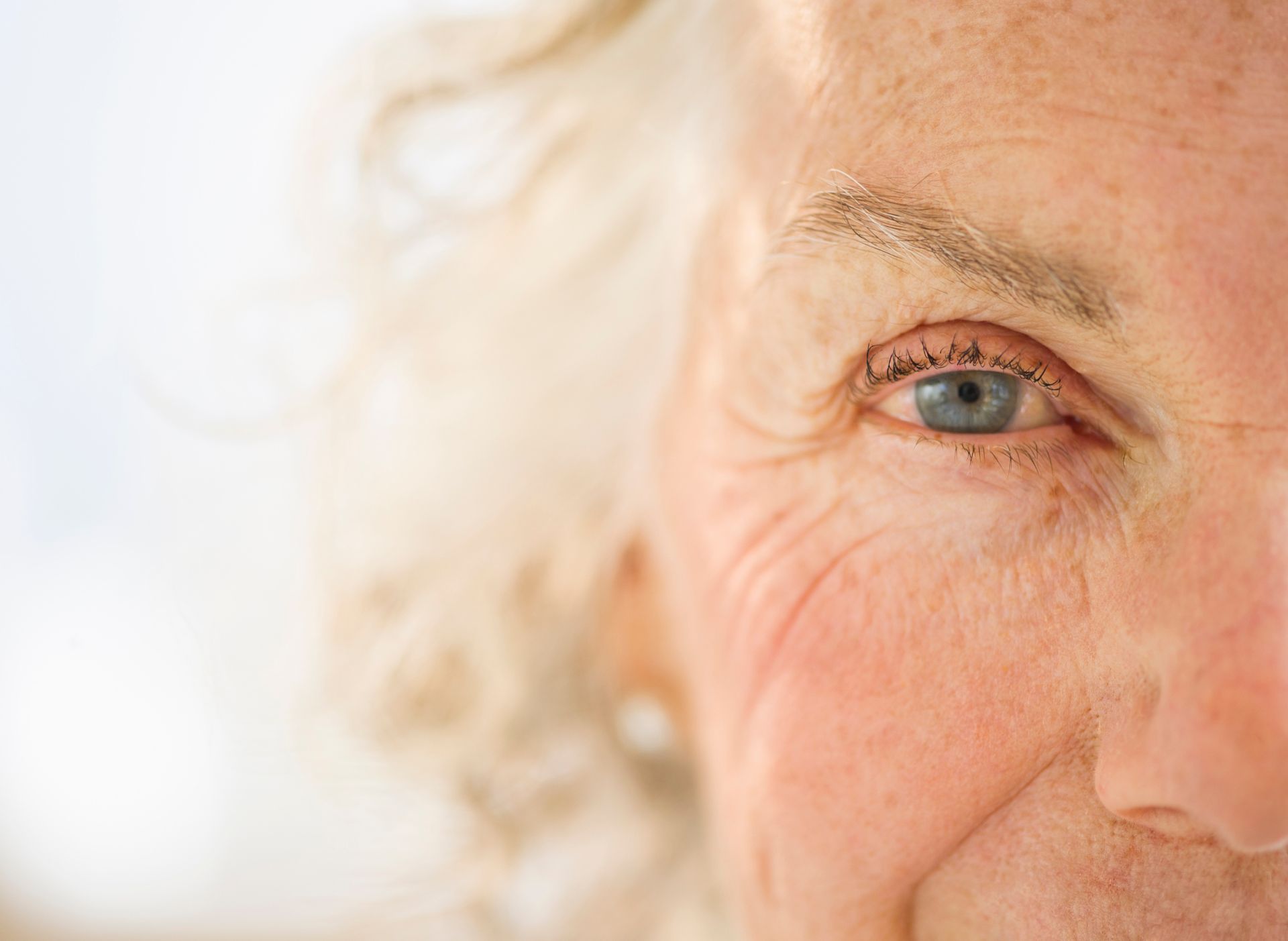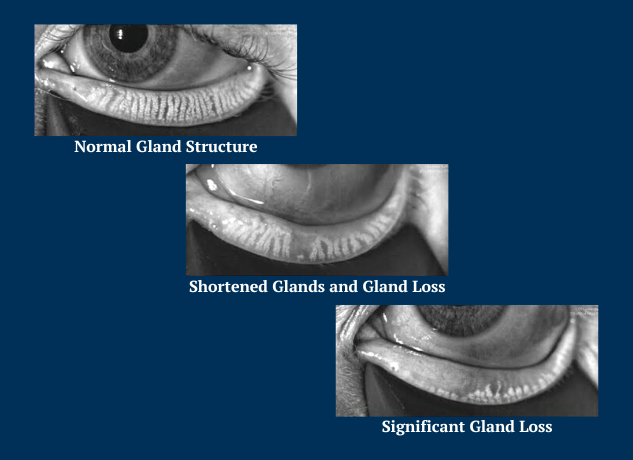Dry Eye
The inability to produce enough tears, known as dry eye, affects millions of Americans. Tears are essential for maintaining the health and comfort of our eyes.
When your eyes fail to generate the appropriate type of tears, you might also encounter discomfort. The production of tears tends to decrease with age, affecting both men and women. However, dry eye is more prevalent among women, particularly those who have experienced menopause. Various factors can affect dry eye such as:
- POOR TEAR QUALITY
- WIND, SMOKE AND DRY WEATHER
- ALLERGIES
- CERTAIN MEDICATIONS
- EYELID PROBLEMS OR INJURIES TO THE EYES
- PROLONGED COMPUTER USE WHICH OFTEN CAUSES REDUCED BLINKING
Individuals who have worn contact lenses for an extended period may also experience the discomfort of dry eye. Dry eye symptoms can be caused by conditions such as rheumatoid arthritis, thyroid disease, lupus, and Sjogren’s syndrome.
Intense Regulated Pulsed Light Therapy (IRPL) is the Most Advanced Treatment for Dry Eye Relief!
IRPL is offered by the doctors at Cataract & Laser Institute. Learn about the IRPL and how it can relieve your suffering from Dry Eyes. Feel long-lasting relief fast!


Symptoms of Dry Eye
- Redness or irritation
- Tired eyes
- Stinging or burning
- Watery eyes
- Mucus in or around the eyes
- Tired eyes
- Blurry vision
The presence of excessive tears does not necessarily indicate the absence of dry eye, as the eyes can produce more tears in response to irritation caused by this condition.
Meibomian Eye Disease
During the examination for dry eye, your doctor will assess tear production and determine if your dry eye is due to MGD (Meibomian Gland Dysfunction). Meibomian Gland Dysfunction accounts for 86% of all cases of Dry Eye Disease. These glands located in the eyelids generate a protective oily layer in the tear film, safeguarding the eye surface and preventing excessive tear evaporation. When the glands are obstructed and fail to produce sufficient oil, discomfort arises, accompanied by the diverse symptoms of Dry Eye Disease.


Maintaining Great Eye Health
Maintaining lifelong visual health requires a dedication to adopting healthy practices. Whether it’s making nutritious food choices or safeguarding your eyes against harmful UV rays, there are steps you can take to ensure the well-being of your eyes throughout your lifetime. Among these measures, scheduling an annual comprehensive eye examination is crucial. These examinations play a vital role in identifying eye diseases and detecting other potential health concerns.
Dry Eye Treatments Include
Artificial Tears and Ointments
These tears are like your own and can be used often. The doctors of CLI recommend preservative free tears since some preservatives might irritate the eyes.
Lipid Based Eye Drops
By minimizing the evaporation of watery tears, these drops promote the creation of a well-balanced and efficient tear film, resulting in a reduction of dry eye symptoms.
Medicated Eye Drops
These drops enhance the natural tear production of your eyes, counteracting the reduction caused by inflammation associated with chronic dry eye.
Eyelid Scrub Pads and Foam
These are used to remove debris from the eyelashes and the lid margins. Lid hygiene is key to maintaining the health of the meibomian glands and surface of the eye.
Omega-3 Supplements
These supplements will help decrease inflammation and are known to improve dry eye.

Blinking Exercises
Partial blinking is a prevalent occurrence among individuals experiencing dry eyes. If you have been diagnosed as a partial blinker and your doctor recommends blinking exercises to improve your condition, please follow these instructions.
Individuals who have worn contact lenses for an extended period may also experience the discomfort of dry eye. Dry eye symptoms can be caused by conditions such as rheumatoid arthritis, thyroid disease, lupus, and Sjogren’s syndrome.
Punctal Occlusion
Another treatment option for dry eye is punctal occlusion, a minimally invasive procedure where small biocompatible plugs are inserted into the tear ducts. These plugs effectively block drainage, leading to increased moisture on the eye’s surface and in the tear film. Punctal occlusion is considered one of the least invasive long-term solutions for treating Dry Eye Syndrome. With this treatment, you can rely on your natural tears without the constant need for artificial tear replacements, saving you both inconvenience and expenses.
The entire procedure can be completed in just a few minutes at our office. Many patients experience immediate relief from dry eye symptoms after undergoing punctal occlusion. This procedure is most suitable for individuals with minimal inflammation on the surface of the eye tissue. Typically, we recommend using comfortable 6-month duration plugs that naturally dissolve and can be replaced as necessary.
